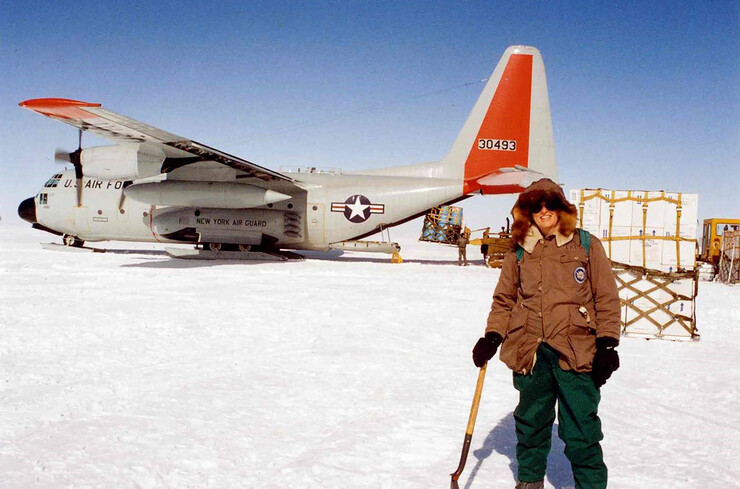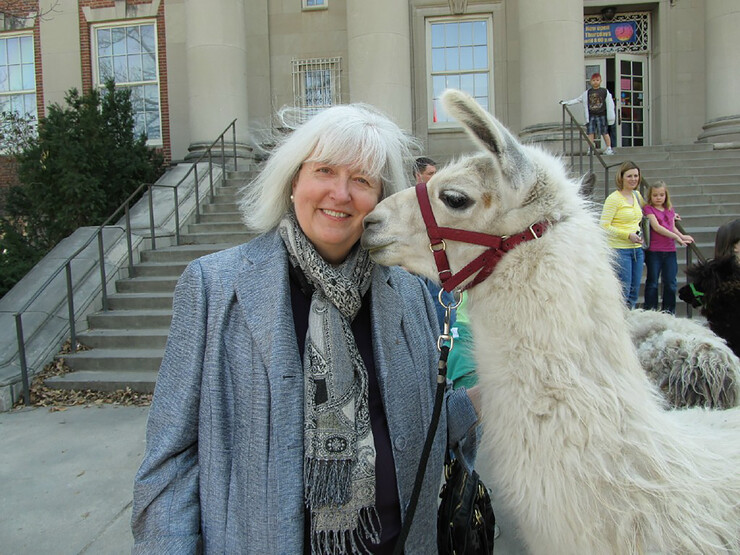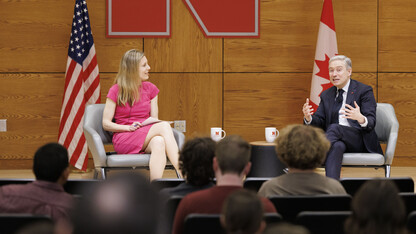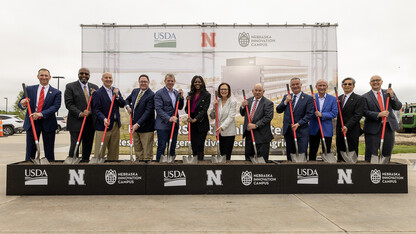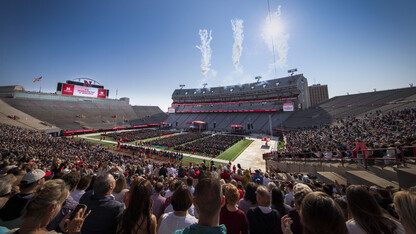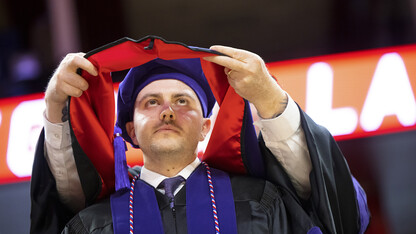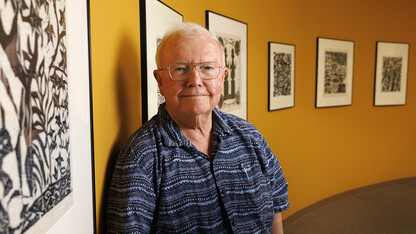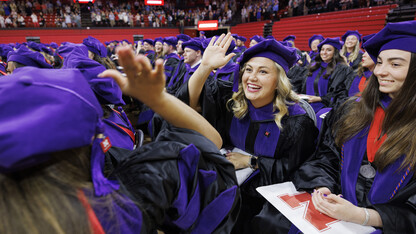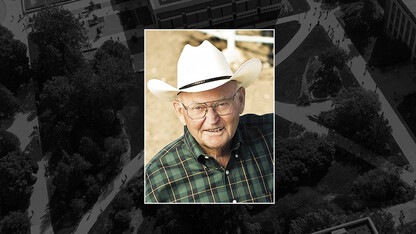· 7 min read
Grew looks back on impactful, intercontinental career
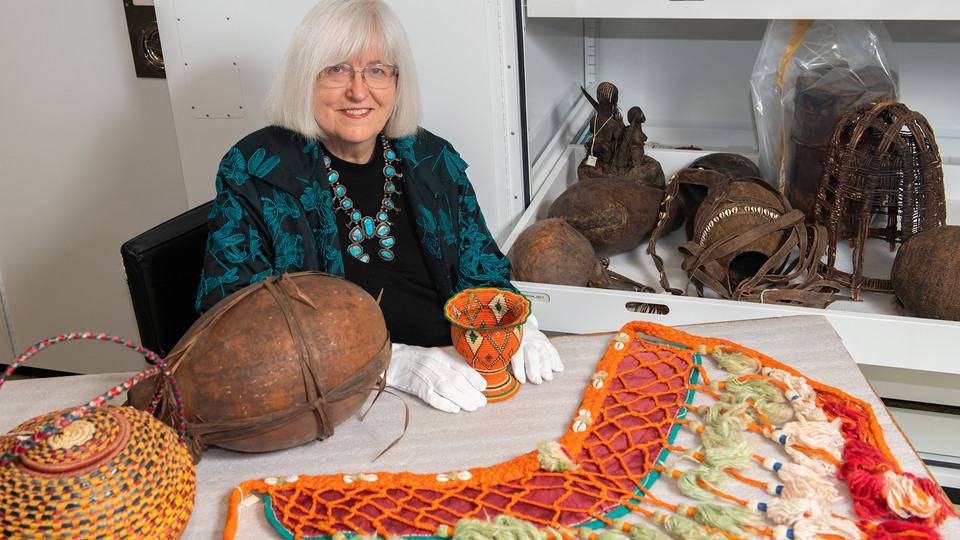
Some might say the love of discovery is in Priscilla Grew’s DNA.
The allure of the natural world led her to every continent except Antarctica over her nearly six-decade career, and eventually to the University of Nebraska–Lincoln, where she had an immeasurable impact and garnered numerous awards — most recently induction as a Member National of the international Explorers Club.
“I’ve had seven different careers, but they’ve all related back to geology, and (being a geologist) was kind of by accident,” she said. “I’ve always built on whatever’s gone before, even though it doesn’t seem connected at first.”
Grew was raised to be curious. Her grandfather, as a University of California–Berkeley student, participated in an 1870 geological expedition to Yosemite, and then served as a missionary in India, where her father was born.
“I have always had that international side to my family,” said Grew, now professor emerita of earth and atmospheric sciences and director emerita of the University of Nebraska State Museum. “And my father was a minister, so we moved around a lot.”
As a child, Grew’s parents instilled in her a love of the Earth and the rocks beneath her feet.
“My mother was a musician who had a special interest in and liked to collect minerals, and my father loved the mountains, so we would go on vacations and she would take me fossil collecting,” Grew said. “I kind of grew up thinking that is what you did on vacations.
“The whole idea that this was somehow left from another world or another time was just magical to me.”
A happy accident
Fascinated with science throughout childhood, Grew first enrolled at Bryn Mawr, one of the Seven Sisters Colleges, as a physics major. The field was part of the popular culture zeitgeist of the time, thanks to the Cold War and the space race.
“I got to college and I absolutely hated physics,” she said. “I had a miserable freshman year and terrible grades.
“That summer, my family went back to this ranch in Colorado, where we’d vacationed every year since I was 8, and I met people majoring in geology. I thought that would be a great fit for me, and then the question was, does Bryn Mawr even offer geology? Fortuitously, Bryn Mawr was the college that had produced the first female fellow of the Geological Society of America, so I really lucked out.”
After graduating from Bryn Mawr, Grew went west and earned her doctorate in geology from the University of California–Berkeley.
Academia and public service
In 1969, as an assistant professor at Boston College, Grew paid her own way to go on a 10-day international research excursion to Lake Baikal in Siberia.
“That was my first big expedition, and I was thrilled to learn that I was the first American woman to visit many of the areas we studied,” she said.
After teaching and doing research for about a decade, Grew joined the public service sphere in 1977 when then-Gov. Jerry Brown appointed her director of the California Department of Conservation, followed by a stint as a commissioner for the California Public Utilities Commission.
In Minnesota, academia and public service combined for Grew as she served as a professor of geology at the University of Minnesota and director and state geologist for the Minnesota Geological Survey.
Last stop: Nebraska
In 1993, she arrived at the University of Nebraska–Lincoln, which was the final stop on her career itinerary, but here, too, she held several positions, having a broad impact on campus.
“I came here as the vice chancellor for research, and I especially enjoyed working with faculty in many areas of research and creative activity because I have a wide variety of interests,” she said.
Her first order of business as vice chancellor for research was to step off a ski-equipped C-130 aircraft at the summit of the Greenland ice sheet to bring the National Science Foundation U.S. Polar Ice Coring Office back to Nebraska. The office originated here, but was grabbed away by Alaska in 1988.
“Because my husband Ed Grew worked in Antarctica, I already knew the late Bob Rutford and the history of Nebraska’s leadership in polar research ever since the 1960s,” she said. “The PICO tradition continued with the university’s international ANDRILL project, and most recently the Mercer Subglacial Lake Drilling Project. I am so proud of Nebraska’s six-decade record as an international center for ice core drilling research, which is essential for understanding past global climate change.”
While serving as vice chancellor for research, Grew also took on, in 1998, the role of university coordinator for the Native American Graves Protection and Repatriation Act, which meant she spent much time among the University of Nebraska State Museum collections.
Her familiarity with the museum collections and work as the coordinator led to her appointment in 2003 as director of the University of Nebraska State Museum after state budget cuts slashed its funding in half.
“We had to regain the public confidence and support, and support of donors,” Grew said. “We introduced some new programming and started fundraising for the fourth-floor renovation.”
Grew and her team earned reaccreditation for the museum in 2009, and it was designated a Smithsonian affiliate museum in 2014.
Grew officially retired in 2015, but her legacy is still felt at the museum. Her leadership laid the groundwork for the many advancements the museum has seen over the last 15 years, including the new state-of-the-art fourth-floor exhibition, Cherish Nebraska, which opened in 2019.
In honor of her years of service, the Priscilla Grew Museum Scholarship Fund was established by the University of Nebraska State Museum Friends Board, colleagues and friends in 2015. The award honors Grew’s dedication to the museum as a professor and administrator.
“I am very grateful to the Friends of the State Museum for starting the Grew Scholars program when I retired in 2015,” Grew said. “It is a joy each year to meet the winners who come from across the university, not just disciplines represented in the museum’s research collections.”
Despite retiring, she still spends each Wednesday morning in the museum’s collections, volunteering as NAGPRA coordinator.
“Since 1993, we have repatriated the remains of more than 2,000 individuals from the museum’s collections,” she said. “Right now, we’re working on very complex cases, and I’m really thrilled the museum was able to hire Katelyn Trammell, our new full-time anthropology collection/NAGPRA assistant.”
Grew also continues her science diplomacy, with her election in 2019 as a member of the finance committee of the International Union of Geodesy and Geophysics, and she still loves examining new fossils and minerals.
“Geology is a historical science,” Grew said. “It’s kind of working out what happened in the past. I think that’s the big thing that draws me to it.
“There’s excitement in looking for minerals and fossils. It’s like a treasure hunt and then there is this whole idea that you’re learning about things that came before, way, way back in time.”
